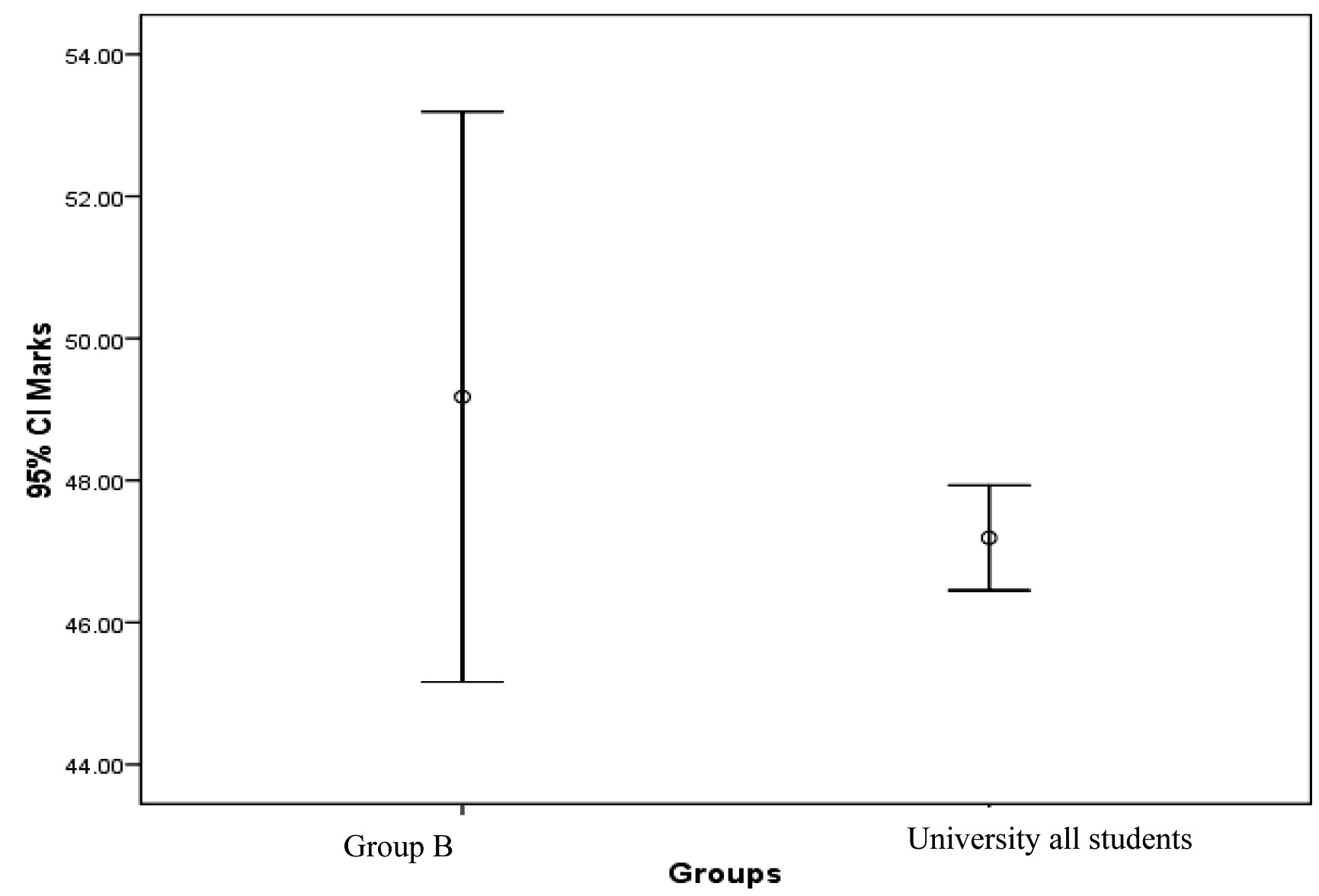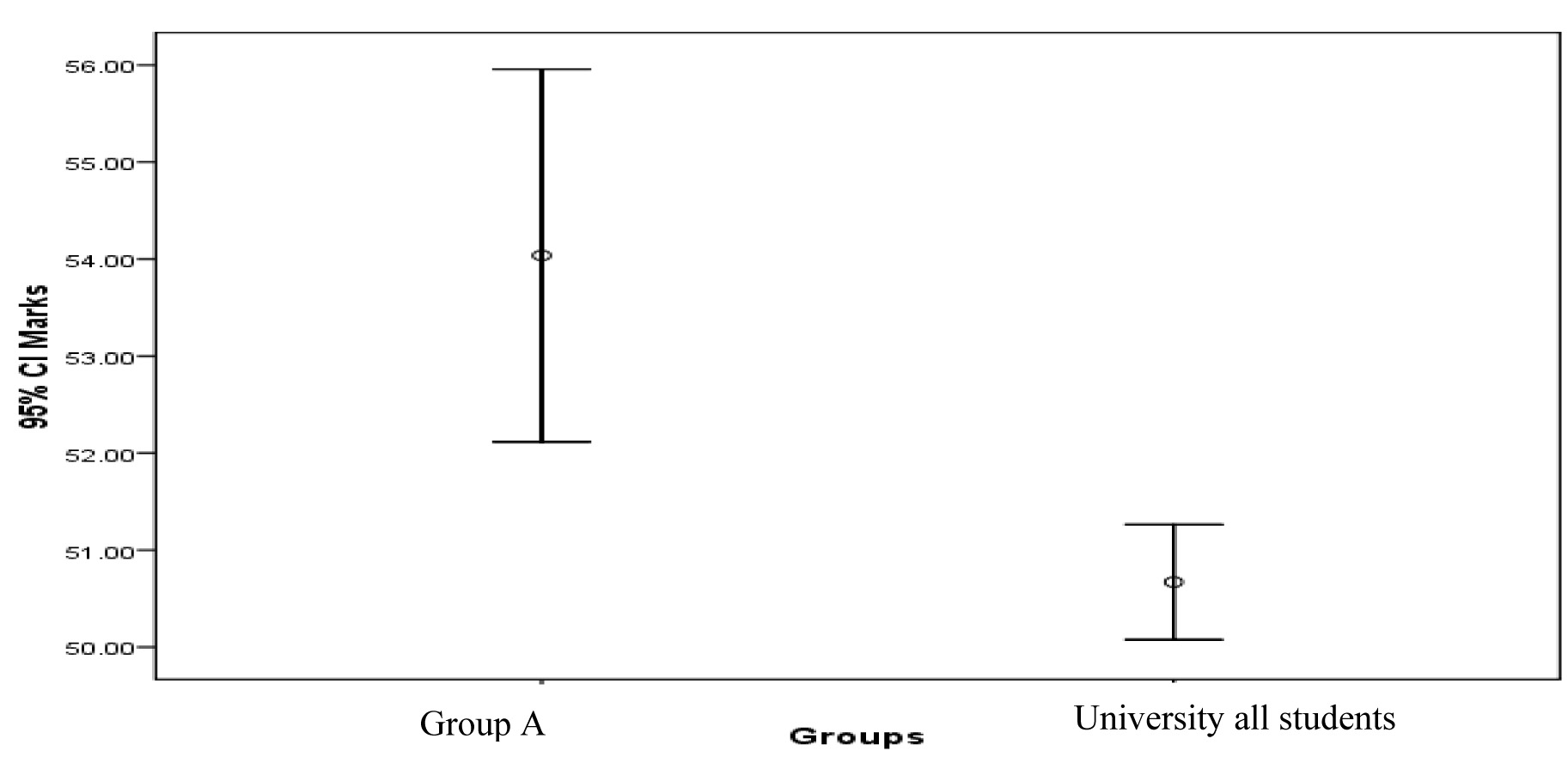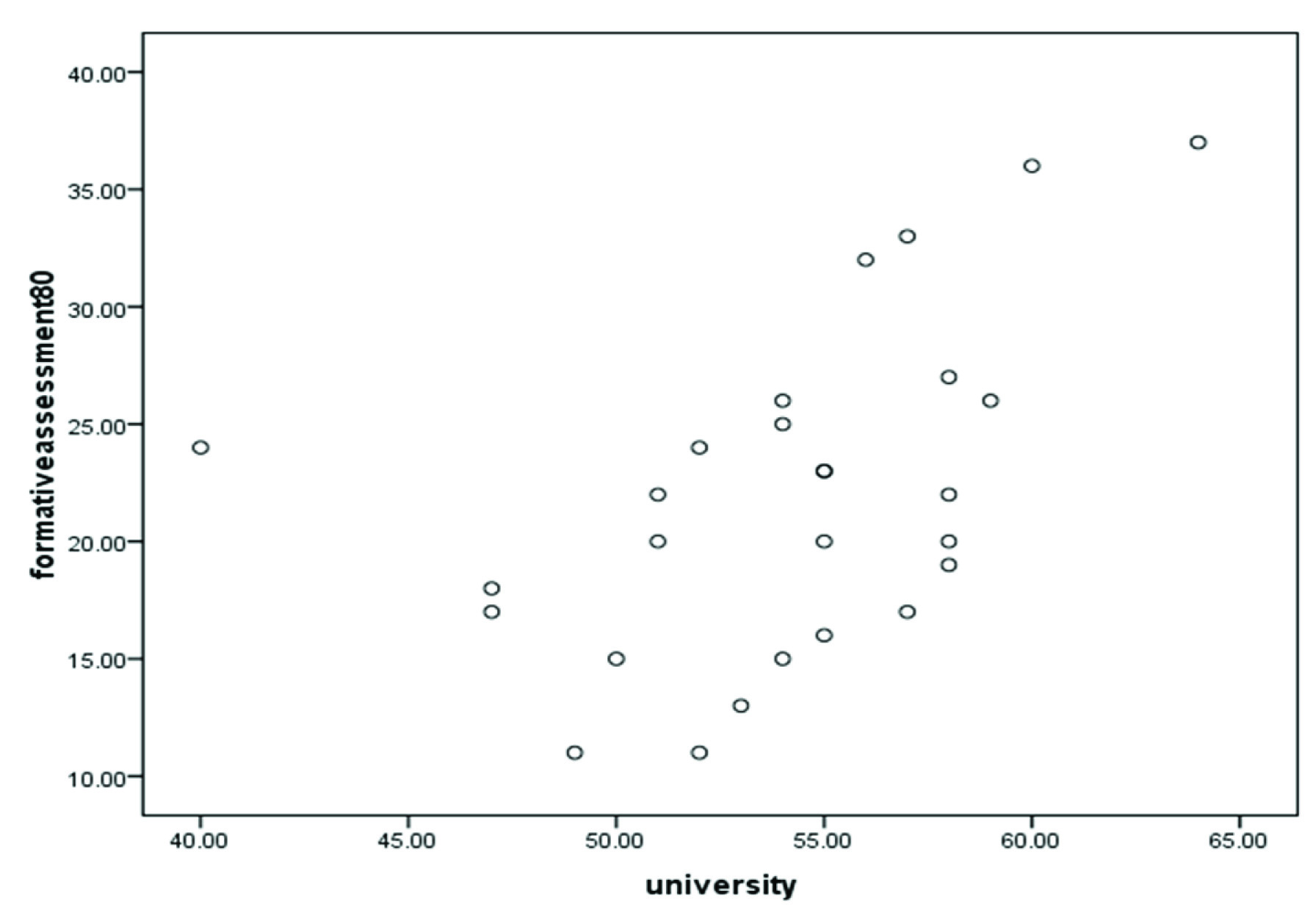Good quality assessment has become a major challenge within medical education with all types of assessment having intrinsic flaws [1,2]. The purpose of assessment is multitudinous from being formative providing reflection and reaction to the learner to being summative determining the learner’s cognitive value or clinical acumen [3]. Periodic observations and multiple assessment methods can atone the flaws in any one method [2]. Formative Assessment (FA) is defined as “information communicated to the learner that is intended to modify his or her thinking or behaviour for the purpose of improving learning” [4]. Feedback generated through FA steer improvement in prospective directions for both teaching and learning.
FAs provide benchmarks to orient learners who have to master a relatively unstructured body of knowledge. They are systematically designed instructional interventions which reinforce student’s intrinsic motivation to learn and aspire them to set higher standards for themselves [5,6]. It can be timed close book evaluations like multiple choice questions or short answer questions to assess recall. It may be untimed open book based which assess student’s ability to integrate and apply knowledge. FA apprise the learners on levels of learning required and gaps in learning by pinpointing their strengths and weakness, help novice learners to identify important information, support self-inspiration in acquisition of knowledge and skills, connect procedural errors or misconceptions and set them on right direction of learning through feedbacks [3,7].
Despite their known benefits to student attitudes and learning, medical school curricula have been slow to integrate such assessments into the curriculum [8,9]. Such studies enlighten us on the requisites of an enabling environment for faculty and student development as well as reasons for resistance to adoption of FA in the future. This study was done with an objective to study the effectiveness of FA in changing the outcome of the students in final Summative Assessment (SA) in Pharmacology, to compare the final summative assessment of the study batch with the previous corresponding batch of students and university average and to assess the feedback of the students on formative assessment in motivating them to learn the subject.
Materials and Methods
This was a prospective interventional study done in Department of Pharmacology of a Government Medical College under Kerala University of Health Sciences (KUHS). The study period was one year (October 2015 to September 2016) and was initiated after getting the Institutional Review Board and Ethics Committee Approval (EC 77/2015 dated 22.09.2015). Supplementary batch second year medical undergraduates of 2013 admission (henceforth called Group A) who gave informed consent (n=27) to participate in the study formed the sample.
Monthly tests (short answer questions) based on the topics covered were given to Group A. The effect of FA in improving their outcome during their SA (Pharmacology university theory exams held in September 2016) was studied. The SA marks of Group A was compared with that of their senior batch (2012 admission Supplementary batch henceforth, called Group B who wrote Pharmacology university theory exams held in September 2015). Group B had received no interventions in the form of monthly tests in Pharmacology during their entire second year MBBS course. The SA of Group A and B were compared with their corresponding university average of whole KUHS students to ascertain that change in outcome if any were not by chance. Monthly tests were conducted for a period of six months, the last one being three months before the final exam.
Group A was given a structured questionnaire [Appendix 1] prepared by the investigators to collect their perspectives regarding FA towards the end of pharmacology course.
The data were analysed using SPSS software version 16 (SPSS Inc, Chicago, USA). Descriptive data were expressed using frequencies and percentages. The outcome of intervention was compared using unpaired t-tests. Pearson’s correlation was calculated to find the relation of FA marks with that of the SA.
Results
Twenty seven students participated in the interventional study with mean age of 22.16±0.69 years. There were 12 females and 15 males.
As shown in [Table/Fig-1], the average theory marks of A Group (54.04±4.86) was higher compared to B Group (49.18±7.81) and was statistically significant (p=0.03).
Pharmacology marks of Study Institution versus KUHS whole students.
| Year of Exam | Study Institution | KUHS students | t value,p-value |
|---|
| Group | n(Batch) | University theory Marks(Mean±SD) | n | Universitytheory Marks (Mean±SD) |
|---|
| 2016 Sep | A | 27 | 54.04±4.86 | 788 | 50.68±8.50 | 3.43, 0.002 |
| 2015 Sep | B | 17 | 49.18±7.81 | 683 | 47.19±9.86 | 0.824, 0.41 |
As shown in [Table/Fig-2], the average score of Group B was slightly higher than that of the university average but it was not statistically significant (p=0.41). The error plot of the same is depicted in [Table/Fig-3]. However, the average score of students who received intervention, the Group A, was higher than that of the university average and was found to be statistically significant (p=0.002). The error plot of the same is depicted in [Table/Fig-4].
Pharmacology marks of Interventional (A) versus Non-interventional (B) group.
| Group | n (Batch) | Year of Exam | University theoryMarks (Mean±SD) | t value, p-value |
|---|
| A | 27 | 2016 Sep | 54.04±4.86 | 2.3,0.03 |
| B | 17 | 2015 Sep | 49.18±7.81 |
Error plot of Group B supplementary pharmacology exam.

Error plot of Group A supplementary pharmacology exam.

[Table/Fig-5] depicts the scatter plot correlating the average marks of FA with that of the university marks of the intervention group. The pearson’s correlation coefficient r was 0.497 with p=0.008.
Scatter plot for formative assessment & summative assessment of Group A.

Feedback of participants on the perceived usefulness and challenges in learning enhancement was obtained. Twenty five of the 27 participants completed the feedback questionnaire with response rate 92.6%. As shown in [Table/Fig-6], only 24% of the participants came prepared for the FA. Majority (72%) opined that frequent short tests should be introduced in all the subjects. The participants found the assessments to be most useful as a guide to their performance (80%) and on topics desirable to be learned (92%). The assessments helped in improving interaction with peers, discussion of difficult concepts, obtain clarification regarding answers to a question, encouraged learning by making it interesting. However, majority were unsure about its role in assessment criteria, maintenance of transparency as well as acceptance of positive criticisms. There was minimal disagreement on interpretation of feedback but majority were anxious of open scrutiny. Majority of participants gave neutral response when asked about the time factor related to the tests, self-assessments and difficulty in explaining answers to questions.
Student feedback on formative assessment.
| Student Feedback (n=25) | Disagree(1+2)n (%) | Neutral(3)n (%) | Agree(4+5)n (%) |
|---|
| Perceived Usefulness of formative assessments |
|---|
| Prepared for all the formative assessment tests | 6(24) | 13(52) | 6(24) |
| Should be introduced in all the subjects | 3(12) | 4(16) | 18(72) |
| Helped in interaction with peers | 1(4) | 8(32) | 16(64) |
| Provided opportunity to discuss difficult concepts | 3(12) | 8(32) | 14(56) |
| Helped in asking why a question was marked wrong | 6(24) | 6(24) | 13(52) |
| Guided to improve performance | 1(4) | 4(16) | 20(80) |
| Encouraged to learn | 2(8) | 4(16) | 19(76) |
| In knowing what content is to be learned | 1(4) | 1(4) | 23(92) |
| Helped in knowing assessment criteria | 0 | 16(64) | 9(36) |
| Helped in accepting constructive criticism | 3(12) | 14(56) | 8(32) |
| Helped maintain transparency of assessment | 3(12) | 12(48) | 10(40) |
| Made learning interesting | 3(12) | 8(32) | 14(56) |
| Perceived challenges in learning enhancement |
| Difficulty in interpreting feedback | 5(20) | 17(68) | 3(12) |
| Anxiety about open scrutiny | 9(36) | 6(24) | 10(40) |
| Assessments were time consuming | 8(32) | 12(48) | 5(20) |
| Difficulty in self-assessment | 12(48) | 11(44) | 2(8) |
| Difficult to explain reasons for answers | 10(40) | 10(40) | 5(20) |
1-Strongly disagree 2- Disagree 3-Neutral 4-Agree 5–Strongly Agree
Discussion
The right choice of assessment formats, their frequency and standard remain challenging. SA is still the focus of faculty and students, as scores obtained in SA is reflected more in future. FA help to explore a subject in a contemplative fashion with holistic understanding. The students yearn to be investigational and link new information to existing knowledge. What so ever FA may be negatively perceived as being demanding as it requires substantial time and commitment from both students and staff [10]. However, with the passage of time, FA have synced as a normal routine in academic life [3].
Several studies have shown the positive benefits of formative evaluation on summative evaluation [9,11,12]. Alsalhanie KM et al., claimed that 80% of their participants accepted the statement that self-regulated deep learning prompted by FA aids in achieving better SA results [9]. Labarca et al., stated that academic achievement was improved in 90% of students who took FA [11]. Another study claims that participation in FA is a better predictor of final result than the performance in them [12]. Cauley and McMillan have suggested that FA help students in tracking their progress thus improving learning and finally producing competent doctors [13]. In the current study we can see that the mean scores of the intervention group was better than that of the non-intervention group as well as overall KUHS university score and it was statistically significant. Even though the mean score of non-intervention group was slightly higher than the corresponding university average it was not statistically significant. This shows that FA can help in improving the performance of SA. As depicted in the scatter plot there was a moderately positive correlation between the marks gained in FA and SA.
FA needs to be integrated into the curriculum and linked to learning objectives [14]. It can be merged with lectures, seminars or case based discussions using multiple techniques like pre-reading quiz, The One Minute Paper, Think-Pair-Share, Practice Quiz/Multiple Choice Questions [15]. A study amongst undergraduates and interns found that frequent short tests at the end of a few chapters foster learning and evaluation needs to be continuous and formative [16]. Active experience with methods which are stimulating, motivating and entertaining are preferred more by the students [17,18].
Feedback on perceived usefulness of FA shows that less than 25% came fully prepared for all the short tests conducted. Palmer E et al., states that since FA doesn’t directly contribute to final grade lack of sincerity among learners can be a challenge to the assessors [19]. Lack of time and interference with independent study habits can hinder the students from backing away from the ulterior motive of preparing for FAs.
About 72% participants opined that FAs should be conducted in other subjects as well since they help to guide them in their performance and enlighten them on the Important topics to be learned. They also opined that FAs paved way to better peer and teacher-learner interaction by discussions on difficult concepts which made learning interesting and encouraging. An assessment can be thought to be formative only if it elicits action from both the students and teachers thus, finally enhancing learning [20]. Velan GM et al., in open ended feedback of their research found that FAs provided the participants with an opportunity to correct misconceptions, helped in integrating variety of concepts learnt throughout the course and gave good insights into their performance and helped identify areas for potential improvement [21].
Feedback on perceived challenges in learning were lack of surety about its role in assessment criteria. Alsalhanie KM et al., stated that FAs do not incur any penalty on the academics [9]. Jenkins et al., opined that SA are assessments “of learning” and per se don’t reflect learning as it focusses on gaining better grades and reproductive thinking without paying attention to “gaps in learning” [22]. FA is assessment “for learning” and it enriches the learner’s experience improving them ultimately.
By helping to track the progress of students FAs can motivate them to reach specified competencies [23]. Feedback has tremendous impact on learning and accomplishment of students [14,16]. Good quality feedback should be scientifically based, apt, accessible and of exhilarating value to the learner. Maintenance of transparency as well as acceptance of positive criticisms will increase its acceptance by the students. Majority of the participants interpreted the feedback positively but they were anxious of open scrutiny. Formal faculty training will help them to understand the mindset of students which will prepare them to give better feedback.
Limitation
The small number of participants of a single institution in this study demands a further continuation of such studies in subsequent batches with larger participants to reconfirm our claim. More studies need to be done in different institutions which can be pooled together to further develop the process of FA.
Conclusion
FA help in improving the outcome of SA. They enlighten the students on must know areas and shorten the gaps in learning. Uncertainty about use of FA marks for final outcome is demotivating but the students need to be sensitized on the wider scope of these evaluations however, which increase wholesome development of the learner and his competencies.
1-Strongly disagree 2- Disagree 3-Neutral 4-Agree 5–Strongly Agree